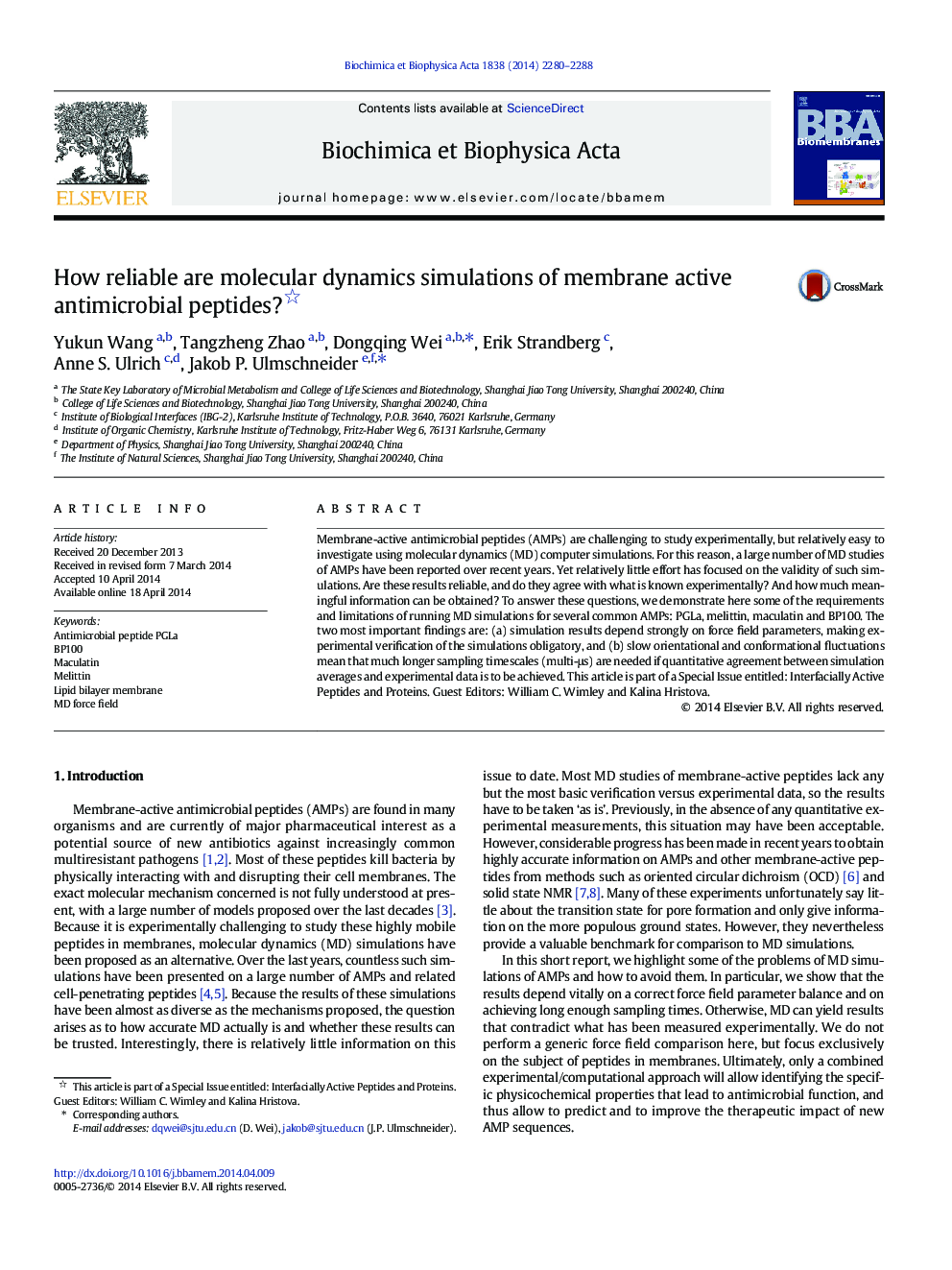| Article ID | Journal | Published Year | Pages | File Type |
|---|---|---|---|---|
| 1944186 | Biochimica et Biophysica Acta (BBA) - Biomembranes | 2014 | 9 Pages |
•Are molecular dynamic simulations of antimicrobial peptides (AMPs) reliable?•We investigate the 4 peptides PGLa, melittin, maculatin and BP100.•Secondary structure in the bilayer depends strongly on force field parameters.•Slow conformational fluctuations mean that much longer sampling timescales are needed.
Membrane-active antimicrobial peptides (AMPs) are challenging to study experimentally, but relatively easy to investigate using molecular dynamics (MD) computer simulations. For this reason, a large number of MD studies of AMPs have been reported over recent years. Yet relatively little effort has focused on the validity of such simulations. Are these results reliable, and do they agree with what is known experimentally? And how much meaningful information can be obtained? To answer these questions, we demonstrate here some of the requirements and limitations of running MD simulations for several common AMPs: PGLa, melittin, maculatin and BP100. The two most important findings are: (a) simulation results depend strongly on force field parameters, making experimental verification of the simulations obligatory, and (b) slow orientational and conformational fluctuations mean that much longer sampling timescales (multi-μs) are needed if quantitative agreement between simulation averages and experimental data is to be achieved. This article is part of a Special Issue entitled: Interfacially Active Peptides and Proteins. Guest Editors: William C. Wimley and Kalina Hristova.
Graphical abstractFigure optionsDownload full-size imageDownload high-quality image (451 K)Download as PowerPoint slide
